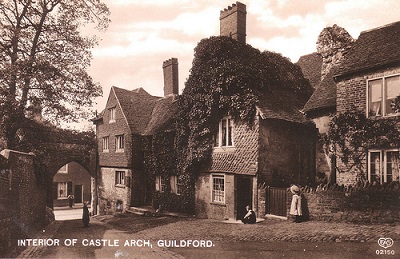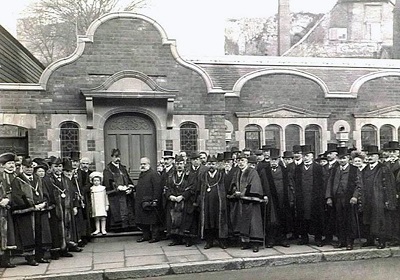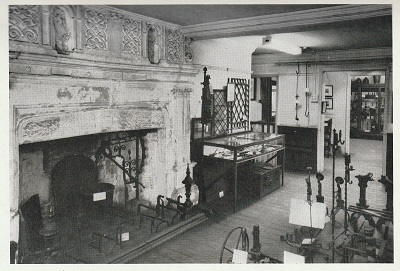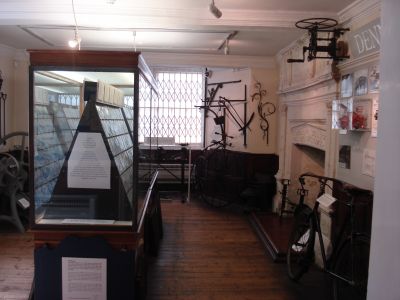
For a detailed history read Notes on the History of Guildford Museum. Further information is available in the Friends of Guildford Museum Newlestters. For links to local heritage groups included the Guildford Guides and Friends visit the GHF Members page. For information on the collection read the collections management policy
Guildford Museum opened in 1898. It was an age of a social improvement when services we now take for granted were being introduced. These included state schools, hospitals, swimming baths, public parks, libraries and, of course, museums. Guildford Borough Council wanted to put itself on the map as a modern borough. In 1885 it purchased the ruined Guildford Castle which it set in an ornamental park. It also teamed up with the Surrey Archaeological Society to create a new museum for the town.

Despite its name, the SyAS had a broad collecting policy and brought to the town local history collections, prints, maps and a library. In 1911 a new gallery was added to the museum to house an important collection of rural life material collected by the garden designer Gertrude Jekyll. Another important acquisition was a national collection of needlework from 17th century to 20th century started by a local, Miss Joan Drew in 1928. She persuaded the borough to take up the collection which remains popular and receives visits from needlework groups across the region.

The SyAS has made a major contribution to our understanding on Guildford’s history through its research, publications and excavations. Two excavations that stand out are the Saxon cemetery discovered on Guildown in 1929 which produced evidence of the earliest Guildfordians and the Wanborough Roman Temples excavated from 1985.
From the 1970s to the end of the twentieth century Guildford was lucky to have a very active museum team. The Guildford Town Guides were set up in 1984 and the Friends of Guildford Museum in 1994. There were major excavations of the Medieval Friary from 1974 to 1978 and the royal palace at Guildford Castle from 1990. The latter culminated in a major renovation of the Norman keep and a new exhibition which opened in 2004. The archaeological galleries were redisplayed giving the museum some modern looking displays. Starting with “Guildford as it was” in 1978 the museum was active researching local history, writing academic and popular articles, speaking on local radio, organising festivals and appearing in two local history films by award winning local film group Circle Eight. Money raised by the “Friends” was used to buy collections, fit out displays and eventually buy a Victorian schoolroom in 2001 which employs educational staff who have provided lessons to countless children across nearly two decades.


Despite this the museum itself looked dated. Parts would have been easily recognisable to a timetraveller from the 1950s.
Proposals for a new museum go back almost to its creation. There were plans after the First World War to build a new museum and library as a memorial to the fallen. Much later, ambitious plans for a Surrey Museum on the site of Farnham Road bus station were formally adopted in the Borough Plan for 1983 but never implemented. More modest attempts to build on the museum garden and add an entrance into the Castle Grounds also fell foul of planning and financial obstacles. In 1997 the curator tried unsuccessfully to persuade the Borough to purchase The Chestnuts as a Lewis Carroll Centre when it came on the market.
In 2005 the Borough Council decided to apply for a lottery money but 10 years later after two failed attempts and a decade of stagnation a new Council decided to call time on the museum in 2015. Thankfully strong opposition within the council and from the public saved the day. A review decided that the museum should remain and a dedicated project team was appointed in 2018.